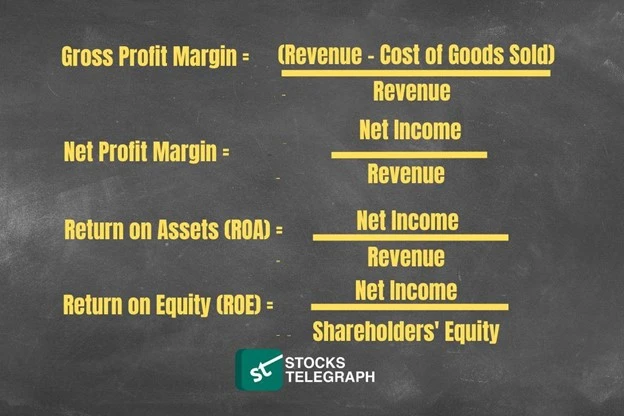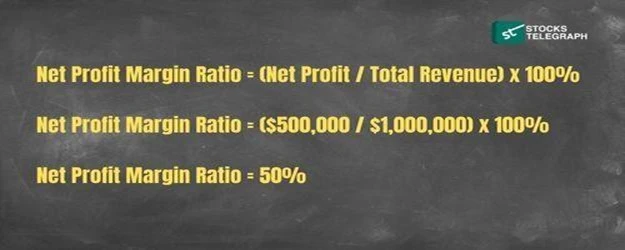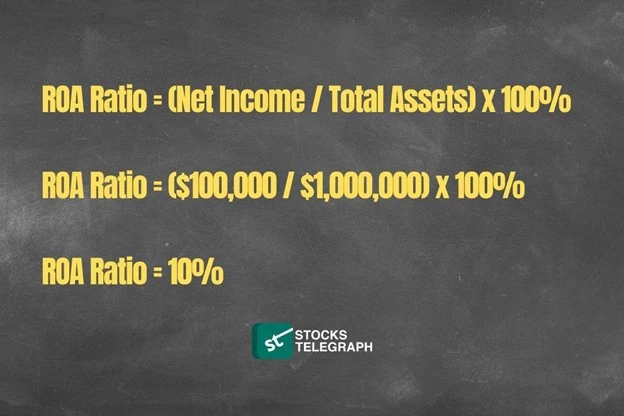In today’s fast-paced and competitive business environment, companies are constantly striving to increase their profits and stay ahead of the game.
To achieve this, they use various financial metrics and ratios to analyze their financial performance. One such metric is the profitability ratio, which is a key indicator of a company’s financial health.
Understanding profitability ratios is crucial for businesses of all sizes as it can help them optimize their financial strategies.
In this article, we’ll dive into what a profitability ratio is, how it’s calculated, and why it matters to businesses. So, if you’re looking to take your company’s financial performance to the next level, read on!
What is a Profitability Ratio?
A profitability ratio is a financial metric used to measure a company’s ability to generate profits relative to its expenses and investments. It is an essential tool for assessing a company’s financial health and sustainability, providing valuable insights into its performance and potential for growth.
By analyzing a company’s profitability ratios, investors and business owners can gain a deeper understanding of its financial performance and potential for growth.
These ratios can help identify areas where a company is excelling and areas where it may need to improve.
Why Profitability Ratios are Important?
They are important for several reasons:
-
Evaluate Financial Health
Profitability ratios are a key indicator of a company’s financial health and sustainability. By measuring a company’s ability to generate profits relative to its expenses and investments, they offer valuable insights into its financial performance.
-
Comparison with Competitors
Profitability ratios can be used to compare a company’s financial performance with that of its competitors. This can help investors and business owners identify areas where their company is excelling or lagging behind their peers.
-
Analyze Efficiency
Businesses and investors can use them to determine how efficiently a company uses its resources. By comparing profitability ratios over time, businesses can identify areas where they can improve efficiency and reduce costs.
-
Investment Decision
The use of profitability ratios can aid in the process of making wise investment choices. By analyzing a company’s profitability ratios, investors can evaluate its financial performance and potential for growth.
Profitability vs Revenue
Profitability and revenue are two vital metrics in assessing a company’s financial performance, yet they represent distinct aspects of business success.
While revenue refers to the total amount of money generated from sales or services rendered, profitability measures the company’s ability to generate earnings and achieve sustainable financial health.
Revenue provides a snapshot of a company’s top-line growth and market reach, but it does not necessarily indicate profitability.
Profitability, on the other hand, takes into account various costs and expenses, such as production costs, operating expenses, and taxes, to determine the actual profit generated from the revenue.
It is crucial for businesses to strike a balance between revenue growth and profitability to ensure long-term viability and create value for stakeholders. Ultimately, focusing on both revenue growth and profitability is essential for maintaining a successful and sustainable business.
What Is the Formula for Profitability?
There are several profitability ratio formulas we can use, but the most common ones include:

The profitability ratio formula helps stakeholders measure a company’s performance from different angles.
What Are The 5 Profitability Ratios?
There are several types of profitability ratios, each measuring a different aspect of a company’s profitability.
Some of the most commonly used ratios include
- Gross Profit Margin
- Operating Profit Margin
- Net Profit Margin
- Return on Assets
- Return on Equity
Gross Profit Margin Ratio
The gross profit margin ratio is a financial metric that measures the percentage of sales revenue that a company retains after accounting for the cost of goods sold. This ratio is calculated by dividing the gross profit by the total revenue and multiplying the result by 100 to express it as a percentage.
The gross profit margin ratio provides insight into a company’s ability to generate profits from its core business operations. A higher gross profit margin indicates that a company is generating more revenue from its sales and is more efficient in managing its cost of goods sold.
This is important because the higher the gross profit margin, the more money a company has available to cover its other expenses and invest in growth.
For example, if a company has $1 million in revenue and its cost of goods sold is $500,000, its gross profit would be $500,000. The gross profit margin ratio would be calculated as shown below:

This means that for every dollar of revenue generated, the company is retaining 50 cents as gross profit after accounting for the cost of goods sold.
Operating Profit Margin Ratio
The operating profit margin ratio is a financial metric that measures the percentage of sales revenue that a company retains after accounting for all operating expenses, such as salaries, rent, utilities, and depreciation.
This ratio is calculated by dividing the operating profit by the total revenue and multiplying the result by 100 to express it as a percentage.
The operating profit margin ratio provides insight into a company’s ability to generate profits from its core business operations, excluding taxes and interest expenses.
This ratio is useful for assessing a company’s operational efficiency and profitability, as it indicates the amount of profit generated from each dollar of sales revenue.
For example, if a company has $1 million in revenue, and its total operating expenses are $500,000, its operating profit would be $500,000. The operating profit margin ratio would be calculated as shown in the image:

This means that for every dollar of revenue generated, the company is retaining 50 cents as operating profit after accounting for all operating expenses.
A higher operating profit margin ratio generally indicates that a company is generating more profits from its core business operations, which is a positive sign for investors and stakeholders.
As a real-time example Perimeter Solutions, (NYSE: PRM) reported a profit margin of 25.50% in the last quarter that ended Mar. 2023.
Net Profit Margin Ratio
The net profit margin ratio is a financial metric that measures the percentage of sales revenue that a company retains after accounting for all expenses, including taxes and interest. This ratio is calculated by dividing the net profit by the total revenue and multiplying the result by 100 to express it as a percentage.
The net profit margin ratio provides insight into a company’s overall profitability, taking into account all expenses incurred in generating revenue. This ratio is useful for assessing a company’s financial health and profitability, as it indicates the amount of profit generated from each dollar of sales revenue.
For example, if a company has $1 million in revenue and its total expenses, including taxes and interest, are $500,000, its net profit would be $500,000. The net profit margin ratio would be calculated as outlined below:

This means that for every dollar of revenue generated, the company is retaining 50 cents as net profit after accounting for all expenses. A higher net profit margin ratio indicates that a company is generating more profits from its operations, which is generally viewed positively by investors and stakeholders.
However, it’s important to note that a company with a high net profit margin ratio may also be sacrificing growth opportunities by not investing enough in expanding its operations or pursuing new markets.
Return on Assets Ratio
The return on assets (ROA) ratio is a financial metric that measures a company’s ability to generate profit from its assets. This ratio indicates the efficiency with which a company is utilizing its assets to generate profits.
The ROA ratio is calculated by dividing the company’s net income by its total assets and expressing the result as a percentage. For example, if a company has a net income of $100,000 and total assets of $1 million, its ROA ratio would be calculated as the following:

This means that the company generated a return of 10 % of the assets it owns. A higher ROA ratio indicates that a company is generating more profits from its assets, which is a positive sign for investors and stakeholders.
Return on Equity Ratio
The return on equity (ROE) ratio is a financial metric that measures a company’s ability to generate profit from shareholder investments. This ratio indicates the return that shareholders have earned on their investment in the company.
The ROE ratio is calculated by dividing the company’s net income by its shareholder equity and expressing the result as a percentage.
For example, if a company has a net income of $100,000 and shareholder equity of $500,000, its ROE ratio would be calculated as follows:

This means that the company generated a return of 20 cents for every dollar of shareholder equity. A higher ROE ratio indicates that a company is generating more profits from shareholder investments, which is a positive sign for investors and stakeholders.
How to Use Profitability Ratios for Financial Analysis
Profitability ratios are a critical tool for assessing a company’s financial health. However, understanding the ratios is just the beginning – it’s equally important to know how to use them for investment.
-
Identify Trends and Patterns
You can identify financial trends and patterns by analyzing a company’s profitability ratios over time. For example, if a company’s gross profit margin is consistently increasing, it may be a sign of efficient cost management.
-
Compare To Industry Benchmarks
Comparing a company’s profitability ratios to industry benchmarks can provide valuable insight into its competitive position. If a company’s return on equity is below the industry average, it may indicate that it’s not generating enough profit compared to its peers.
-
Consider The Broader Financial Picture
While profitability ratios are important, they should be considered alongside other financial metrics. For example, a company with a high net profit margin but significant debt may not be as financially healthy as a company with a lower net profit margin and no debt.
-
Use In Conjunction with Other Analysis Tools
These are just one tool in a financial analyst’s toolkit. To gain a comprehensive understanding of a company’s financial health, it’s important to use them in conjunction with other analysis tools, such as cash flow analysis and balance sheet analysis.
Conclusion
In conclusion, profitability ratios are important financial metrics that provide insights into a company’s ability to generate profits. They help investors, analysts, and managers assess a company’s financial health and performance.
The five commonly used profitability ratios are gross profit margin, operating profit margin, net profit margin, return on assets, and return on equity. These ratios should be used in conjunction with other financial ratios and metrics to conduct a comprehensive financial analysis of a company.
Frequently Asked Questions
Why Are Profitability Ratios Significant?
Profitability ratios are significant because they help assess a company’s financial performance and determine how efficiently it uses its resources to generate profits.
By calculating and analyzing different profitability ratios, investors and financial analysts can gain insight into a company’s profitability, growth potential, and overall financial health.
Profitability ratios can also help identify areas where a company may need to improve its operations, reduce costs, or increase revenues. Ultimately, profitability ratios are an essential tool for making smart investment decisions and evaluating a company’s long-term financial viability.
What Are the Shortcomings of Using Profitability Ratios?
Shortcomings of using profitability ratios include limited perspective, industry variations, and potential manipulation or distortion of financial data.









